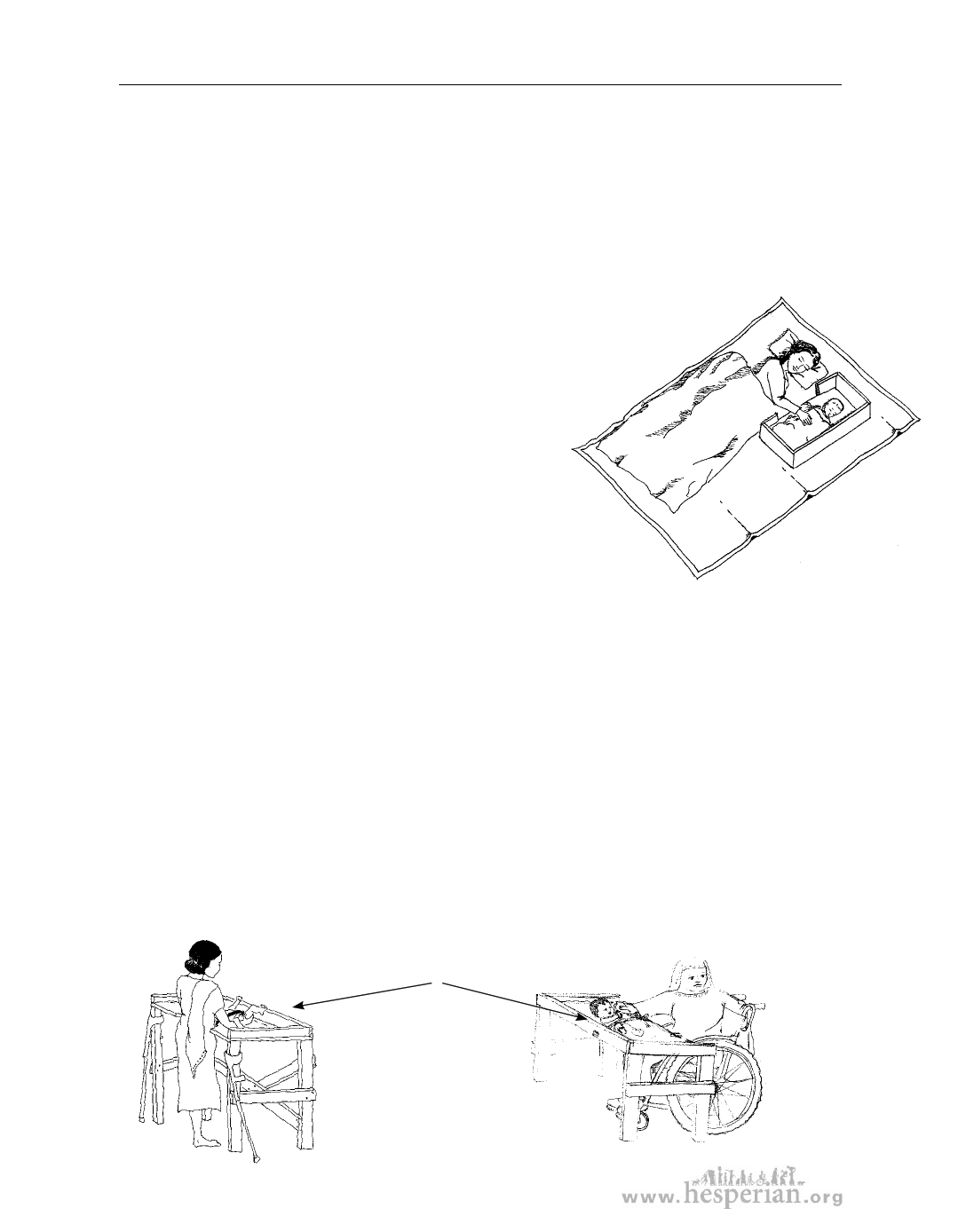
268 chapter 12: Caring for your baby
Sleeping with the baby
Most mothers of small babies rest better sleeping with the baby next to them. It is
easier to breastfeed when the baby wakes up hungry, and you can comfort the baby
without getting up. If you cannot see or hear well, you will always know if your
baby needs to be fed or changed.
If you have difficulty walking, keep a supply of nappies, diapers
or cloth and clean clothes close by so you can also change the baby
during the night without having to get up.
If your disability is such that you may roll over on top of
the baby, or if you need to sleep sitting upright, you will
need to do something else. Here is an example:
If you think you may roll on top of your baby, make a
small wooden bed with sides that the baby can sleep in
beside you. Leave one side partly open so you can easily
reach inside. Smooth the wood or cover it with cloth so
that you and the baby do not get any splinters.
Changing and dressing
the baby
A healthy baby becomes an active, wriggling baby very quickly. Changing his
clothing can become more and more difficult as he grows. Try to use clothes that
are easy to put on and take off. For example, zippers or strips of Velcro (a strong,
fuzzy plastic tape that sticks to itself) are easier to fasten and open than buttons.
If you have physical disabilities
Many women with physical disabilities can safely change and dress their babies
on a table or bed, especially if they can sit down. But some women do not have
enough balance or body strength to do this. Here are 2 examples of simple wooden
tables that will hold the baby safely, and will also not hurt your body. A table can
be made to the height that you need.
Smooth the wood
or cover it with a
cloth so you and
the baby won’t get
any splinters.
A Health Handbook for Women with Disabilities 2007